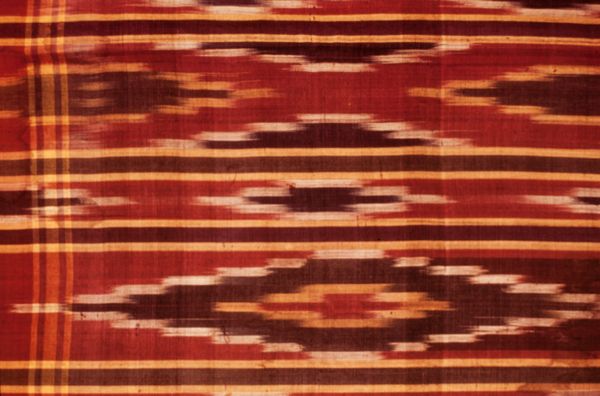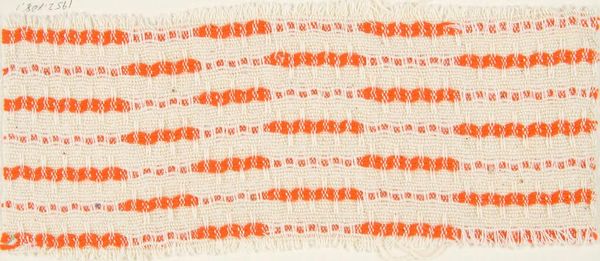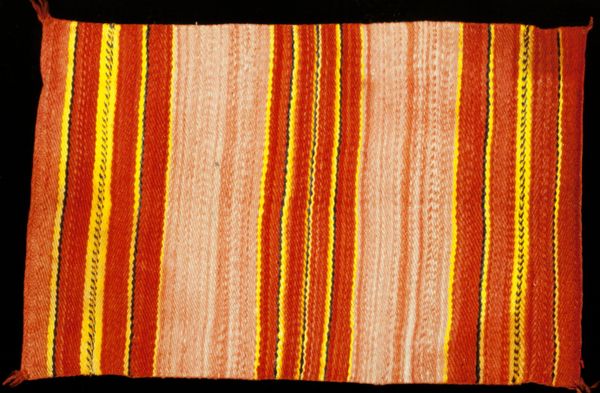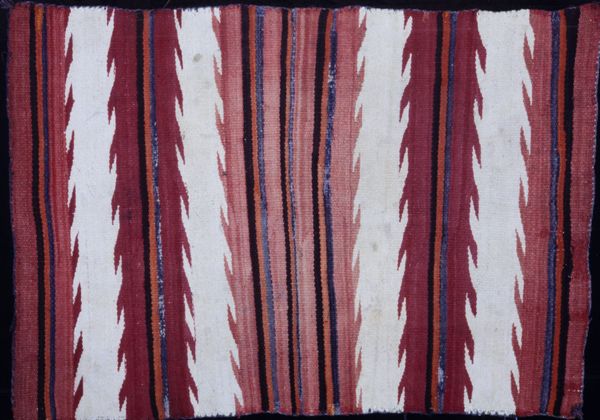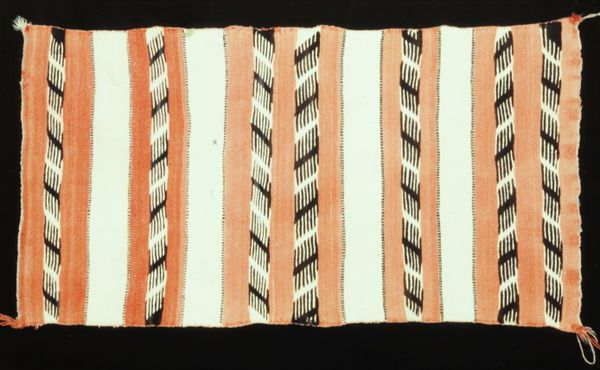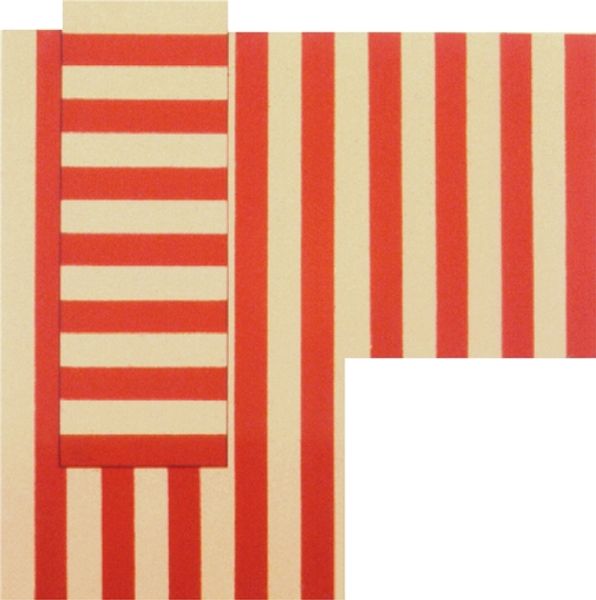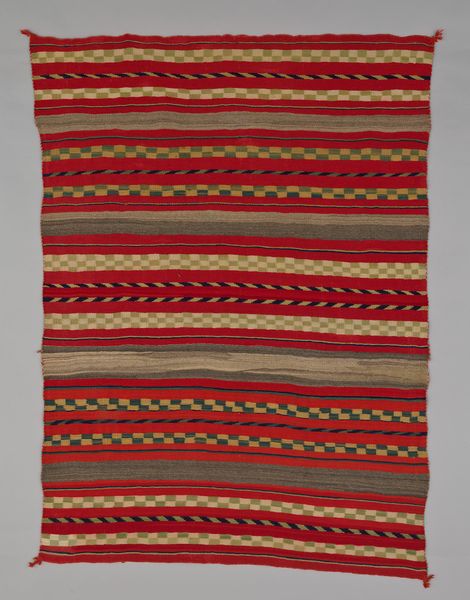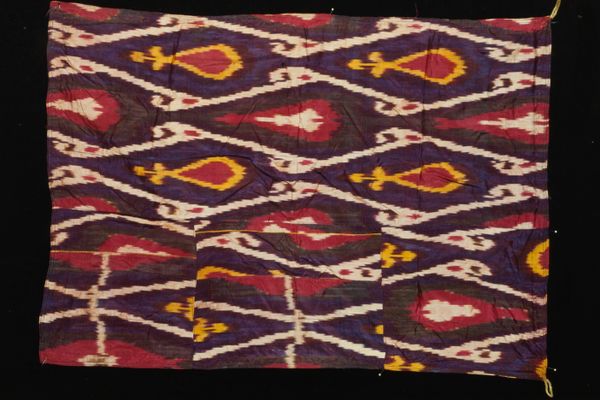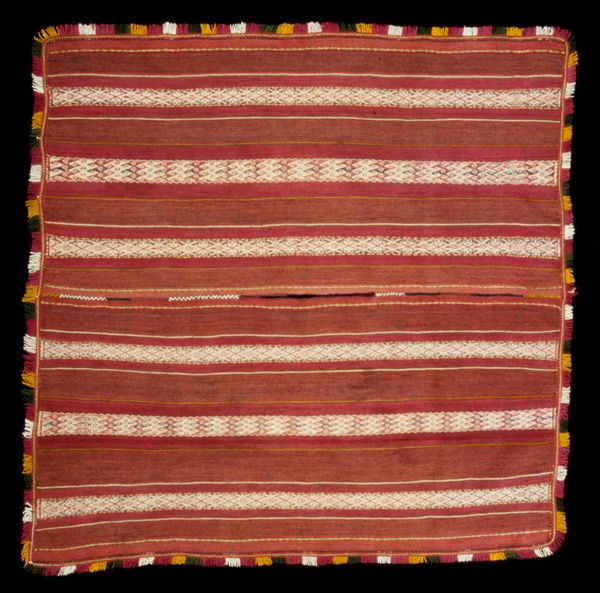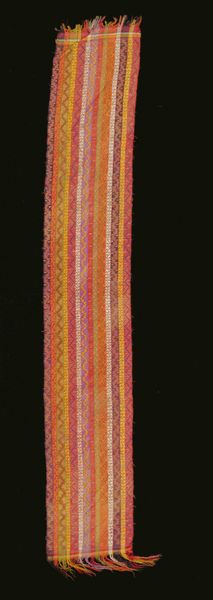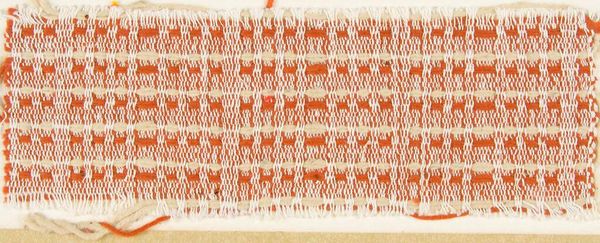
weaving, textile, cotton
#
weaving
#
textile
#
geometric pattern
#
geometric
#
cotton
#
indigenous-americas
Dimensions: 34 x 36 1/4 in. (86.36 x 92.08 cm)
Copyright: Public Domain
Editor: Here we have a textile work, a "Huipil," likely crafted in the 20th century. It is currently housed at the Minneapolis Institute of Art. I am really drawn to how simple geometric forms create such a vibrant and complex piece. What strikes you most about it? Curator: Immediately, I am drawn to its role beyond pure aesthetics. Textiles like this are often deeply embedded in social and cultural histories. How do you think this huipil functions within its original context? Was it merely decorative, or did it carry other meanings? Editor: I would guess it carried other meanings. Perhaps it was an indication of social status or a visual representation of local beliefs? Curator: Precisely. And thinking historically, consider the politics of its creation. Was the maker part of a community with a history of resisting cultural assimilation? The patterns and designs might encode specific stories, lineage, or community values that push against dominant cultural narratives. Can you see any indication in its composition? Editor: Now that you mention it, I see subtle variations in each band. Maybe each community would subtly differentiate its works? Or is the cotton itself of particular social significance? Curator: The raw material can tell a compelling story. Was cotton locally sourced, or was it acquired through trade, perhaps under colonial conditions? Examining the social biography of materials helps uncover unequal power relations embedded within seemingly simple objects. How do we, as a museum, honor the lived experiences these items hold? Editor: That's fascinating. I’d never thought about it in quite that way before - considering its social and political significance! It's made me rethink what I previously believed I understood. Curator: That's the beauty of looking at art through a historical lens. Hopefully it can prompt critical dialogues that move beyond the aesthetic surface to expose deeper, more complex narratives.
Comments
No comments
Be the first to comment and join the conversation on the ultimate creative platform.
